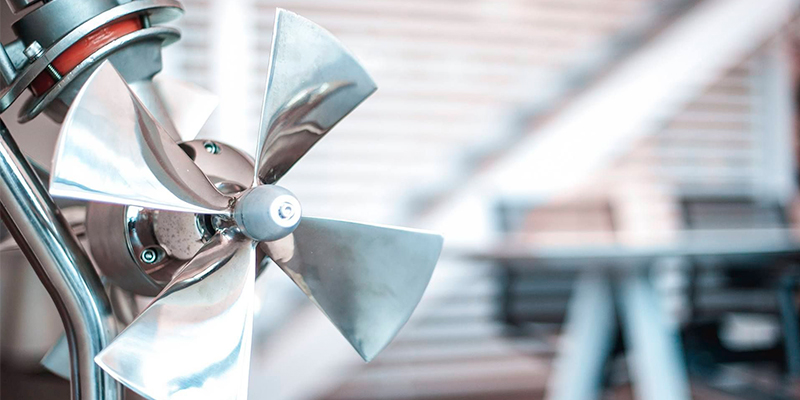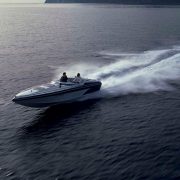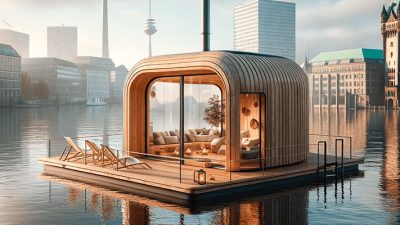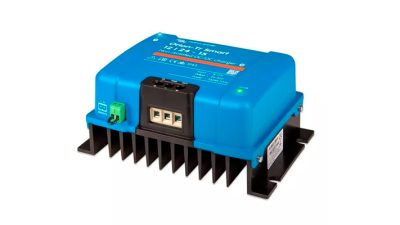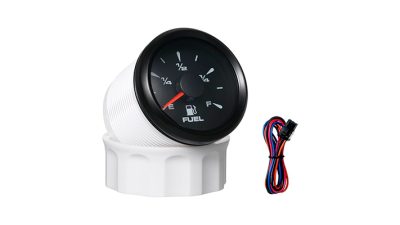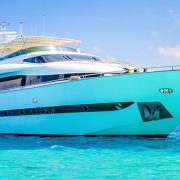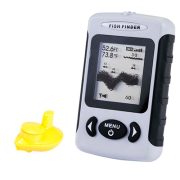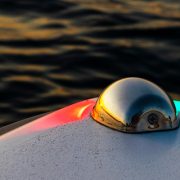What is a Bow Thruster?
A bow thruster is a propulsion device installed in the bow (or front) of a boat or ship that aids in maneuvering.
This tool is particularly useful when docking, undocking, or navigating through tight spaces where precise control is essential.
By pushing the bow to the left or right independently of the stern, a bow thruster greatly enhances the vessel’s agility, giving the captain more control in close-quarter environments.
How is a Bow Thruster Used?
The thruster is used to create lateral movement by pushing water in one direction, which moves the bow in the opposite direction. This movement is achieved by generating current through a propeller, allowing precise control over the vessel’s heading and providing additional agility in challenging docking or undocking situations.
How Does a Bow Thruster Work?
Bow thrusters work by using a small propeller placed perpendicular to the boat’s keel line, typically inside a tunnel that goes through the bow. When activated, the propeller pushes water through the tunnel, generating thrust to move the bow either to the port (left) or starboard (right) side.
This thrust is generated by turning the propeller in one direction or the other. For example, when the propeller spins in a clockwise direction, it will push water out of the port side, moving the bow to starboard. Conversely, a counter-clockwise spin will push water out of the starboard side, causing the bow to move to port.
Types of Bow Thrusters
Bow thrusters come in various types, each suited to different vessels and applications. Here are the main types:
- Electric Bow Thrusters: These thrusters are powered by electric motors and are commonly used on smaller vessels. They are quiet, efficient, and easier to install than other types.
- Hydraulic Bow Thrusters: Hydraulic thrusters are driven by hydraulic power systems, making them powerful and suited for larger vessels that require higher thrust.
- Tunnel Bow Thrusters: The most common type, tunnel thrusters are installed in a tunnel through the hull and provide a straightforward solution for most boats.
- Retractable Bow Thrusters: For vessels that require reduced drag, retractable thrusters can be deployed when needed and retracted into the hull when not in use.
Advantages of Using a Bow Thruster
Bow thrusters offer several advantages for boat owners and captains:
- Improved Maneuverability: Bow thrusters make docking and navigating in tight spaces much easier, reducing the stress of handling large vessels in crowded marinas.
- Enhanced Safety: With greater control, there is less risk of collisions or accidents during docking or low-speed maneuvers.
- Increased Independence: With a bow thruster, a captain can often manage docking alone, eliminating the need for additional crew assistance.
Additionally, beyond the basic tunnel and retractable options, there are more advanced solutions such as bow thrusters placed in a duct, providing enhanced maneuverability for motor boats, especially those with a bow thruster room located below the waterline. Bow thrusters are placed at the forward end of the vessel, while stern thrusters are placed at the aft end. These systems allow for sideways movement of the boat, creating lateral or athwartship forces for better control, especially when docking. Transverse thrusters placed on both sides of the vessel are the most common, and bow thrusters are generally installed through the bow.
Many larger vessels utilize both external thrusters and tunnel systems, with the requirement for the number of thrusters depending on the size and operational needs of the vessel. The use of tugboats to enter or leave port areas, and the compulsory use of tugboats, is often determined by local regulations, as many countries have local regulations that dictate the safety requirements for maneuvering larger ships within port limits. Additionally, stern and bow thrusters are crucial for large vessels to stay on course and reduce the impact of the vessel when it falls on the pier.
It’s essential to regularly check for water accumulation at regular intervals within the bow thruster tunnel from inside the boat, as this accumulation can affect the system’s performance over time.
How to Use a Bow Thruster
Operating a bow thruster is relatively simple. Most systems are controlled by a joystick or a set of buttons on the helm station. Moving the joystick or pressing a button will engage the thruster, pushing the bow in the desired direction.
It is important to use the bow thruster in short bursts rather than continuous operation. This approach conserves energy and prevents the motor from overheating. Also, remember to use the bow thruster in conjunction with your main engine and rudder for smoother and more controlled movements.
In some cases, a bow thruster may be paired with a stern thruster for enhanced control at both the forward and aft ends of the vessel. This setup, known as a thruster set, allows the boat to move sideways, making it easier to dock or undock even in challenging conditions. The bow is kept stable by the thruster, while the stern thruster pulls or pushes the aft end of the ship, creating more maneuverability.
While bow thrusters are the most common, they need to be installed with careful consideration of the vessel’s DC power requirements and hull structure, as some boats may have thrusters placed in through-and-through tunnels. This configuration helps ensure effective thrust, but disadvantages of using bow thrusters include potential drag and power loss if not installed properly. Checking the thruster room periodically is essential, especially for vessels that operate frequently in port areas where entering or leaving port is always a tricky affair due to regulations in many countries that require use of tugs.
Using bow thrusters in conjunction with stern thrusters can make your boat more attractive to buyers, as it provides added handling capabilities. However, it’s important to note that excessive reliance on thrusters may cause the vessel to veer off course, especially if berthing speed is always high or conditions are difficult. By understanding the basics of bow and stern thruster operation and regularly inspecting these systems, you can help ensure smooth, efficient maneuvering and a safer overall boating experience.
Maintenance Tips for Bow Thrusters
Proper maintenance ensures that your bow thruster remains reliable over time. Here are a few tips:
- Regular Inspections: Check the propeller and tunnel for any obstructions or damage regularly, especially before long trips.
- Clean the Thruster Tunnel: Algae, barnacles, and other marine growth can accumulate in the tunnel, so it’s essential to clean it periodically.
- Check Electrical Connections: For electric thrusters, ensure that all electrical connections are secure and free from corrosion.
- Monitor Hydraulic Fluid Levels: For hydraulic systems, regularly check and top up the fluid levels as needed.
How Bow Thruster Works — Conclusion
Bow and stern thrusters play an important role in enhancing a motor boat’s maneuverability, especially when docking or navigating at low speeds. These side thrusters, placed in ducts or through-and-through tunnels below the waterline, allow the bow or stern to move independently, either to port or starboard. The power of the bow thruster depends on the vessel’s size, and it can often replace the need for tugboats in certain situations, offering a powerful way to laterally shift the vessel with the push of a button. Regular checks on the thruster room for water accumulation and maintenance of the thruster’s power source ensure optimal performance, making it an essential tool for boats over 45 feet.
By understanding how a bow thruster works and keeping up with maintenance, you can improve your boat’s maneuverability and enjoy a safer and more controlled boating experience.

